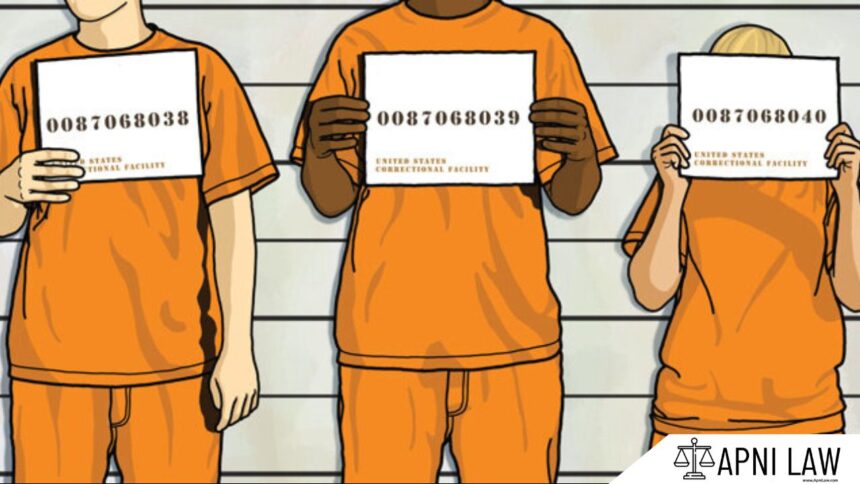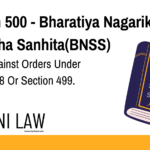This article, written by Aayushi Shukla, takes a closer look at juvenile delinquency—what drives young individuals toward crime and how the legal system responds. From social influences to legal safeguards, let’s explore the key aspects shaping this issue.
Introduction
The term juvenile refers to young individuals who are not yet adults, typically those under the age of 18. Juveniles are in a crucial developmental stage where they transition from childhood to adulthood. This period is marked by significant physical, emotional, cognitive, and social changes. It is a time when young people explore their identities, form values, and develop essential life skills.
Juvenile delinquency is a major societal concern as it can have long-lasting effects on the young individuals involved, their families, and the community. Addressing this issue requires a deep understanding of its causes and legal framework.
Meaning of Juvenile Delinquency
Juvenile delinquency, also known as youth crime, refers to legal violations committed by minors (typically those under 18). This issue is complex and influenced by family dynamics, peer pressure, socio-economic conditions, and education levels.
The Latin term for juvenile delinquency is “delinquens juvenilis”, which translates to a youthful wrongdoer or juvenile delinquent:
- “Delinquens” – Meaning to fail in duty or to commit a crime.
- “Juvenilis” – Meaning youthful or related to young individuals.
Juvenile delinquency can range from minor infractions, such as truancy, to serious crimes, including theft, assault, or drug-related offenses.
Causes of Juvenile Delinquency
Juvenile delinquency results from multiple social, economic, and psychological factors. Below are the key contributing causes:
1. Family Environment
- Parental neglect or abuse – Physical/emotional abuse and lack of supervision increase delinquency risk.
- Dysfunctional family relationships – Divorce, conflict, or absence of parental guidance can lead to behavioral issues.
- Lack of discipline – Inconsistent or overly harsh punishment may contribute to delinquency.
2. Peer Influence
- Association with delinquent peers – Young people tend to adopt behaviors from their social circles.
- Peer pressure – The need to fit in may push juveniles toward unlawful activities.
3. Socioeconomic Factors
- Poverty and unemployment – Limited resources and exposure to crime may influence delinquency.
- Lack of educational opportunities – Poor schooling and disengagement from academics can lead to frustration and crime.
4. Substance Abuse
- Drug and alcohol use – Substance abuse impairs judgment and increases the risk of criminal behavior.
5. Psychological Factors
- Mental health disorders – Depression, anxiety, and conduct disorders can contribute to delinquency.
- Aggression and impulsivity – Some juveniles exhibit aggressive tendencies leading to criminal actions.
6. Cultural and Societal Influences
- Exposure to violence – Growing up in crime-prone areas normalizes unlawful activities.
- Media influence – Movies, music, and games sometimes glorify crime.
7. Educational and School Environment
- School failure and dropout rates – Poor academic performance and bullying may cause behavioral issues.
- School environment – Harsh disciplinary actions and lack of support can push juveniles toward crime.
8. Biological and Genetic Factors
- Genetics – Some research suggests hereditary factors influence behavioral tendencies.
- Neurobiological issues – Impulse control and decision-making deficits may contribute to delinquency.
9. Community and Neighborhood Influence
- High-crime areas – Residing in crime-infested regions exposes juveniles to unlawful behavior.
- Lack of community programs – Limited recreational or mentorship activities may increase delinquency risks.
10. Social Media & Technological Influence
- Cyberbullying – Online harassment can lead to emotional distress and aggressive behavior.
- Social media glorification – Some digital platforms normalize or encourage criminal acts.
Juvenile Delinquents: Characteristics and Common Offenses
Characteristics of Juvenile Delinquents
- Typically under 18 years old.
- Engage in illegal or socially unacceptable behavior.
- Influenced by family, peers, economic conditions, and education.
Common Offenses
- Theft and shoplifting – Stealing money or goods.
- Vandalism – Destroying property, graffiti.
- Drug and alcohol abuse – Using or selling substances.
- Violence – Fighting, bullying, and assaults.
- Truancy – Skipping school.
- Cybercrimes – Hacking, cyberbullying, and fraud.
Types of Juvenile Delinquency
Juvenile delinquency is classified based on the nature of the offense:
- Status Offenses – Acts that are illegal only because the individual is a minor (e.g., truancy, underage drinking, running away).
- Property Crimes – Crimes involving damage or theft (e.g., vandalism, burglary, arson).
- Violent Crimes – Offenses involving physical harm or threats (e.g., assault, robbery, homicide).
- Substance Abuse Crimes – Possession or trafficking of drugs and alcohol-related offenses.
- Gang-Related Crimes – Criminal activities carried out under gang influence.
- Cybercrimes – Hacking, identity theft, and cyberbullying.
- Public Disorder Crimes – Offenses that disrupt public order (e.g., disorderly conduct, loitering).
- Driving Offenses – Reckless driving, DUI, and driving without a license.
Legal Framework for Juvenile Delinquency in India
The Juvenile Justice (Care and Protection of Children) Act, 2015 (JJ Act, 2015) is the primary legislation governing juvenile offenses in India. It focuses on rehabilitation instead of punishment.
Key Features of the JJ Act, 2015
- Establishes the Juvenile Justice Board (JJB) to handle juvenile cases.
- Differentiates juveniles as:
- Children in Need of Care and Protection (CINCP) – Abandoned or orphaned minors.
- Children in Conflict with the Law (CCL) – Minors who have committed offenses.
- Allows trial as an adult for heinous crimes (murder, rape) committed by juveniles aged 16-18.
Stages of Juvenile Justice Process in India
- Arrest/Apprehension – Juveniles must not be placed in police lock-ups and must be presented before the JJB.
- Inquiry by JJB – The board assesses the child’s background and circumstances.
- Age Determination – Official documents verify the minor’s exact age.
- Rehabilitation & Social Reintegration – Options include probation, educational programs, or placement in a juvenile home.
- Case Disposal – Includes bail, counseling, rehabilitation, or institutionalization.
- Review Process – The JJB regularly monitors the juvenile’s progress.
Conclusion
Juvenile delinquency is a pressing issue requiring a balanced approach between rehabilitation and accountability. The Juvenile Justice (Care and Protection of Children) Act, 2015 ensures that juveniles receive corrective measures instead of punitive action. By addressing the root causes of delinquency and implementing structured rehabilitation programs, society can help juveniles reintegrate as responsible citizens.











